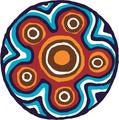Year 2 Term 4 Overviews

Wominjeka Year 2 Families
Term 4 Curriculum
Reading
This term in reading, Year 2 students will be focusing on the purpose and structure of the texts that they read for fiction and non-fiction (this links very well with writing). They will also focus on language features for example, topic specific words that relate directly with the non-fiction text. Vocabulary, learning new words and identifying words they might not know. Students will also focus on summarising the parts of a text looking at chronological order, connecting ideas in different parts of the text and discovering supporting detail. Synthesising new knowledge, understanding what they know and what new knowledge they have learnt and finally, comparing and contrasting fiction and non-fiction characteristics. We are introducing Reciprocal Reading and exploring the roles of Predictor, Summariser, Questioner and Clarifier.
Writing
This term in writing, Year 2 students will be exploring different text types; information reports, persuasive, narrative and poetry, while continuing to expand their writing stamina and technical writing skills.
Information reports
Students will develop their understanding of what a fact is and how this is different from an opinion. They will understand the purpose of an information report and identify the features. Students will explore the structure and the features used when writing an informative text.. They will work through the writing process and create a published information report on a chosen topic, creating an engaging piece of writing to share with their readers.
Poetry
In our poetry unit, students will investigate poetry through simple rhyme and song. Students will create songs and rhymes, they will use their knowledge of rhyming and rhythm to do this. Students will explore various songs and rhymes to develop an understanding of how authors construct these. They will plan for and create their own poems, and work through the writing process while creating their own pieces to share with others.
Persuasive
We are revisiting the following strategies that we covered in term 3. Such as facts and opinions, modality words, structure, vocabulary, planning, diagrams, tables and statistics, illustrations and graphics.
Mathematics
This term in maths, Year 2 students will be again focusing on the big idea of place value. This is a continuation from our learning earlier in the year. This term we will be looking at continuing to expand the repertoire of strategies we know for both addition and subtraction, including the “Take/Add 9” and “Take/Add 11” strategy. Ask your children to explain these methods to you, and let them be the experts!
The grade twos will also be exploring our term 4 maths focus areas. These will be; measuring length 2D and 3D shapes, capacity, fractions, multiplicative thinking and a review of the learning that has already happened this year. 2D and 3D shapes will be exploring the different features of a shape, including vertices and faces for 3D shapes and lines for 2D shapes. We will also look at capacity, in particular how to measure using common informal units, such as unifix blocks or cups of sand.
Multiplicative thinking is a precursor unit to the grade 3 big idea’s focus. This will allow the grade two students to have a base understanding of multiplication and division. They will be looking at ‘groups of’ and the concept of ‘repeated addition’. This will build upon the students' knowledge of addition and subtraction and extend it into a multiplicative thinking approach, moving from simple equations to more complex ones.
Inquiry
This term in inquiry, Year 2 students will be learning about what scientists do in their study of Flora and Fauna and how conditions within our environment affect us? They will use scientific terms such as observations, predictions and experiments to describe the changes in nature. Students will also be involved in identifying the various animals and plants found in deserts, oceans, islands, city areas and suburbs.
